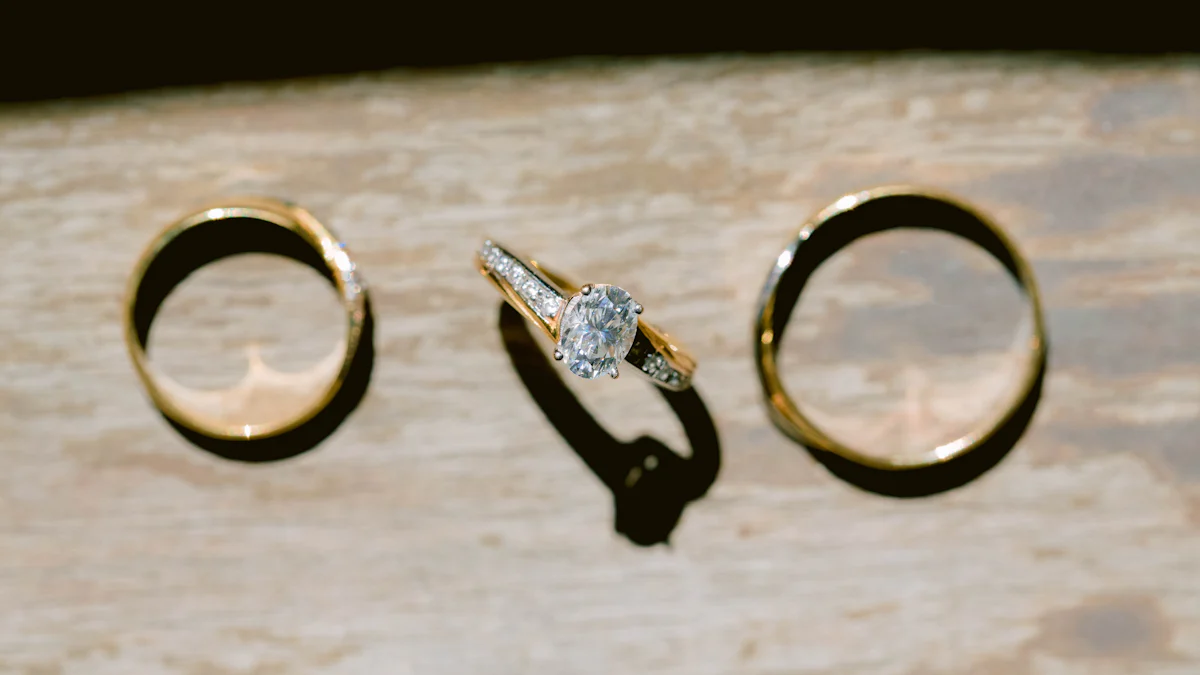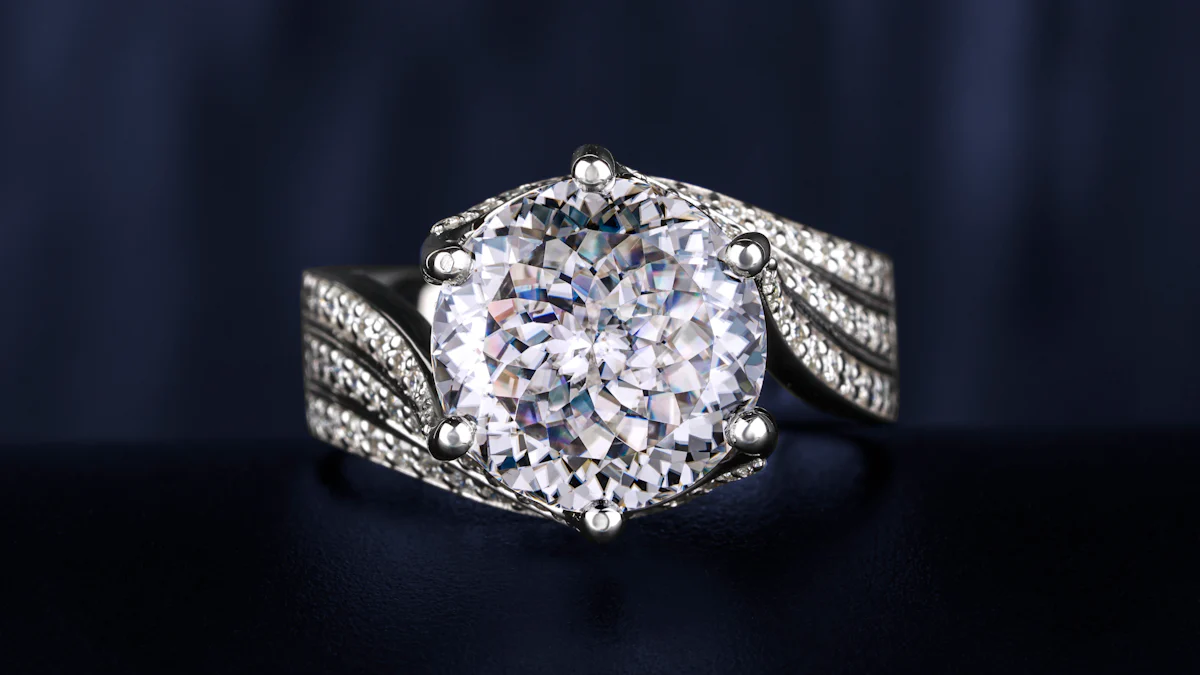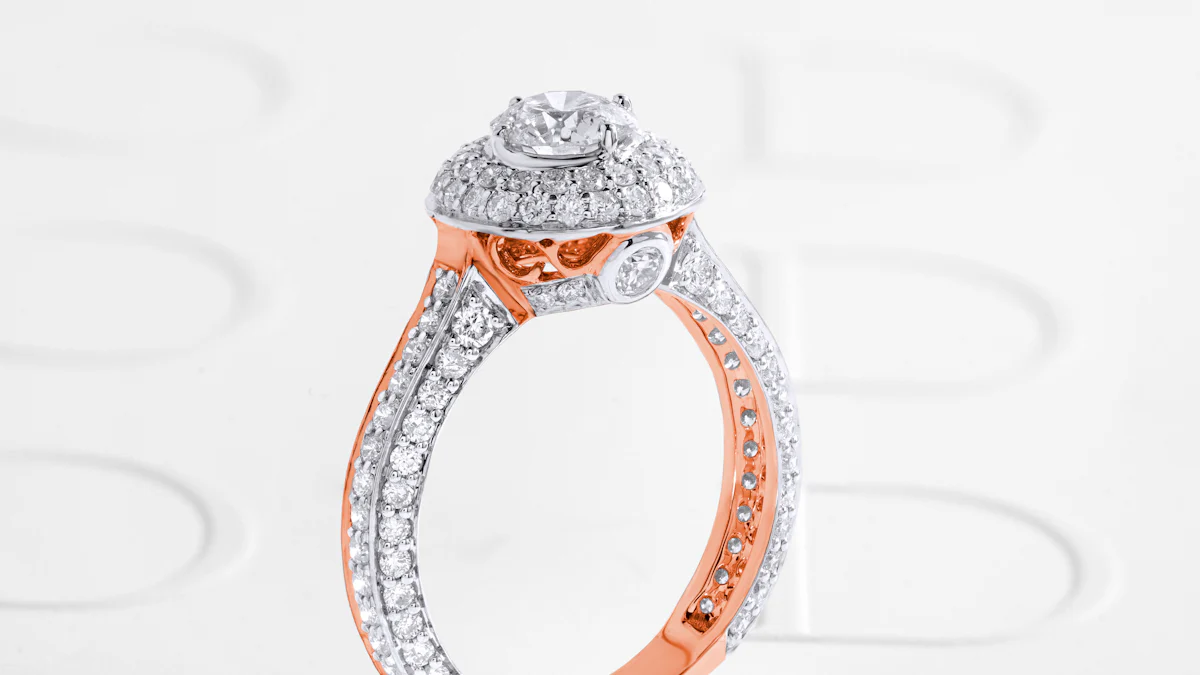VVS Meaning: Pros and Cons of Diamond Investment

VVS diamonds, or Very Very Slightly Included diamonds, hold a special place in the diamond industry. These gems are known for their exceptional clarity, making them a rare find. Only about 5% to 7% of all diamonds fall into this category. Their scarcity and high quality make them highly desirable. As a potential investor, understanding the vvs meaning is crucial. These diamonds not only offer stunning visual appeal but also promise long-term value retention. Investing in VVS diamonds can be a wise choice, given their rarity and market demand.
Key Takeaways
- VVS diamonds, or Very Very Slightly Included diamonds, are highly valued for their exceptional clarity and rarity, making them a desirable investment.
- Investing in VVS diamonds can provide long-term value retention, as they tend to appreciate over time and serve as a hedge against inflation.
- The visual appeal of VVS diamonds is unmatched, offering stunning brilliance that makes them not just an investment, but also a piece of art to cherish.
- While VVS diamonds offer many advantages, potential investors should be aware of the high initial costs and market volatility that can affect resale value.
- Diversifying your investment portfolio by including VVS diamonds alongside other assets can help spread risk and enhance overall returns.
- Understanding the 4Cs—clarity, cut, color, and carat weight—is crucial in evaluating the quality and price of VVS diamonds before making a purchase.
Understanding VVS Diamonds

VVS Meaning and Clarity Grade
When you hear the term VVS, it stands for "Very Very Slightly Included." This refers to a diamond's clarity grade, which is one of the essential aspects of the 4Cs—clarity, cut, color, and carat weight. VVS diamonds are nearly flawless, with inclusions so tiny that even under magnification, they are hard to spot. This high level of clarity makes them incredibly valuable and sought after. You might wonder why clarity matters so much. Well, the fewer the inclusions, the more light can pass through the diamond, enhancing its brilliance and sparkle. So, when you choose a VVS diamond, you're opting for a gem that offers exceptional clarity and visual appeal.
Characteristics and Visual Appeal
VVS diamonds are known for their stunning visual appeal. Their exceptional clarity allows them to shine brightly, making them a popular choice for those who appreciate beauty and elegance. Imagine wearing a piece of jewelry that catches the light perfectly, creating a dazzling display of sparkle. That's what a VVS diamond can do. These diamonds are almost perfect to the naked eye, and their brilliance is unmatched. Whether you're considering a VVS diamond for an engagement ring or another piece of fine jewelry, you're choosing a gem that stands out for its superior quality and allure. The rarity and near-flawless appearance of VVS diamonds make them a testament to nature's extraordinary craftsmanship.
Pros and Cons of Investing in VVS Diamonds
Investing in VVS diamonds can be an exciting venture. These gems offer unique advantages, but they also come with certain drawbacks. Let's explore both sides to help you make an informed decision.
Advantages of Investing
-
High Market Value: VVS diamonds hold a high market value due to their exceptional clarity and rarity. Their value tends to appreciate over time, making them a solid investment choice. You can think of them as a hedge against inflation, preserving your wealth in a tangible form.
-
Long-term Value Retention: These diamonds are known for maintaining their value. Unlike other assets that might fluctuate, VVS diamonds often retain their worth, especially when they possess superior cut and color grades. This stability makes them appealing to investors looking for long-term gains.
-
Exquisite Beauty: The visual appeal of VVS diamonds is unmatched. Their clarity allows them to sparkle brilliantly, making them a prized possession. When you invest in these diamonds, you're not just buying an asset; you're acquiring a piece of art that can be cherished and admired.
-
Prestige and Status: Owning VVS diamonds can elevate your status. They are considered premium investments, often associated with luxury and exclusivity. This prestige can be a significant factor if you value the social and cultural aspects of owning such gems.
Disadvantages of Investing
-
High Initial Cost: VVS diamonds come with a hefty price tag. Their rarity and quality command premium prices, which might be a barrier for some investors. You need to be prepared for a substantial initial investment.
-
Market Volatility: While VVS diamonds generally hold their value, the market can still experience fluctuations. Economic conditions and changes in consumer preferences can impact their resale value. It's essential to stay informed about market trends to make the most of your investment.
-
Liquidity Concerns: Selling VVS diamonds might not be as straightforward as other investments. Finding the right buyer willing to pay the desired price can take time. This lack of liquidity can be a drawback if you need quick access to cash.
-
Storage and Insurance Costs: Protecting your investment involves additional expenses. You need to consider the costs of secure storage and insurance to safeguard your diamonds. These ongoing costs can add up over time, affecting your overall returns.
Comparing VVS Diamonds to Other Clarity Grades

When you're exploring the world of diamonds, understanding how VVS diamonds stack up against other clarity grades can help you make informed decisions. Let's dive into the differences and see what makes VVS diamonds stand out.
VVS vs. VS Diamonds
VVS diamonds, or Very Very Slightly Included diamonds, offer a level of clarity that is almost unparalleled. They have minimal inclusions, which are so tiny that even under 10x magnification, they're hard to spot. This clarity enhances their brilliance and sparkle, making them a top choice for those who value visual perfection.
On the other hand, VS diamonds, or Very Slightly Included diamonds, have slightly more inclusions. These inclusions are still small and often not visible to the naked eye, but they can affect the diamond's overall appearance and light performance. While VS diamonds are still considered high quality, they don't quite match the near-flawless clarity of VVS diamonds.
In terms of investment, VVS diamonds generally command higher prices due to their superior clarity. If you're looking for a diamond that offers both beauty and long-term value, VVS diamonds might be the better choice. However, if you're on a budget, VS diamonds can provide a good balance between quality and cost.
VVS vs. Other Clarity Grades
When comparing VVS diamonds to other clarity grades, the differences become even more pronounced. Lower clarity grades, such as Included (I1, I2, I3), often have visible inclusions that can affect the diamond's durability and light transmission. These inclusions can make the diamond appear less brilliant and may impact its overall appeal.
VVS diamonds represent the crème de la crème of diamond clarity. They offer a near-flawless quality that is appreciated by diamond connoisseurs and those with an eye for detail. Choosing a VVS diamond is like selecting the clearest, most pristine gem from nature's treasure trove. Their brilliance and beauty are unmatched by lower clarity grades.
For engagement rings and fine jewelry, where clarity is a priority, VVS diamonds are often the preferred choice. They provide a level of elegance and sophistication that few other grades can match. If you're seeking a diamond that stands out for its exceptional quality, VVS diamonds are the way to go.
Factors Affecting the Price of VVS Diamonds
Understanding what influences the price of VVS diamonds can help you make smart choices. Let's break down the key factors that play a role in determining their cost.
The Role of the 4Cs
The 4Cs—clarity, cut, color, and carat weight—are crucial in setting the price of VVS diamonds. Each of these elements contributes to the diamond's overall quality and value.
-
Clarity: VVS diamonds are known for their exceptional clarity. They have very few inclusions, which makes them more valuable than diamonds with lower clarity grades. The fewer the inclusions, the higher the price.
-
Cut: The cut of a diamond affects how well it reflects light. A well-cut VVS diamond will sparkle brilliantly, enhancing its appeal and price. The precision of the cut can make a significant difference in the diamond's beauty and value.
-
Color: Diamonds come in various colors, from colorless to shades of yellow or brown. VVS diamonds with less color tend to be more expensive. A colorless diamond allows more light to pass through, increasing its brilliance.
-
Carat Weight: Carat weight measures a diamond's size. Larger VVS diamonds are rarer and more expensive. However, a smaller diamond with excellent clarity and cut can also command a high price.
These factors work together to determine the price of a VVS diamond. For example, a VVS1 diamond usually costs more than a VVS2 diamond when all other factors are equal.
Market Demand and Trends
Market demand and trends also influence the price of VVS diamonds. When demand is high, prices tend to rise. Here are some aspects to consider:
-
Consumer Preferences: Trends in jewelry styles can affect diamond prices. If VVS diamonds become popular in engagement rings or other jewelry, their prices may increase.
-
Economic Conditions: The economy can impact diamond prices. In a strong economy, people might spend more on luxury items like VVS diamonds, driving up demand and prices.
-
Global Market Trends: The global diamond market plays a role in pricing. Changes in supply and demand, as well as geopolitical factors, can influence the cost of VVS diamonds.
VVS diamonds are more expensive than VS diamonds and significantly pricier than SI diamonds. On average, VVS diamonds can be up to 30% more costly than SI diamonds. The price difference between VS and VVS diamonds can vary based on other factors like carat weight, cut, and color. Typically, VVS diamonds cost at least 10-20% more than VS diamonds of similar quality.
By understanding these factors, you can better navigate the world of VVS diamonds and make informed investment decisions.
Evaluating the Investment Potential of VVS Diamonds
Long-term vs. Short-term Investment
When you think about investing in VVS diamonds, it's crucial to consider your investment horizon. Are you in it for the long haul or looking for a quick return? Let's break it down.
-
Long-term Investment: VVS diamonds are rare and hold their value well over time. If you're planning to invest for the long term, these diamonds can be a solid choice. Their rarity and exceptional clarity make them a stable asset. Over the years, they tend to appreciate, especially if they possess other desirable qualities like optimal color and cut. As one expert in diamond investment notes, "VVS diamonds are a good investment. They are rare and hold their value well."
-
Short-term Investment: If you're considering a short-term investment, you might face some challenges. The diamond market can be volatile, and finding the right buyer quickly might not always be easy. While VVS diamonds generally maintain their value, short-term fluctuations in the market can impact your returns. It's essential to stay informed about market trends and be prepared for potential changes in demand.
Diversification in Diamond Investment
Diversifying your investment portfolio is a smart strategy, and diamonds can play a unique role in this approach. Here's how you can think about diversification with VVS diamonds:
-
Balancing with Other Assets: Just like any other investment, it's wise not to put all your eggs in one basket. While VVS diamonds are valuable, consider balancing them with other types of investments. This could include stocks, bonds, or real estate. Diversification helps spread risk and can lead to more stable returns over time.
-
Mixing Clarity Grades: Within the diamond market, you can also diversify by investing in different clarity grades. While VVS diamonds offer exceptional clarity, you might also explore VS or SI diamonds. These can provide a balance between quality and cost, allowing you to have a varied collection that caters to different market demands.
-
Considering Personal Preferences: Your personal preferences and budget should guide your investment decisions. As another expert suggests, "It's essential to consider personal preferences, budget, and the overall quality of the diamond." By balancing clarity, color, cut, and carat weight, you can select the perfect diamond for your investment goals.
VVS diamonds offer a unique blend of beauty, rarity, and investment potential. Their exceptional clarity and desirability make them a premium choice for investors. You can expect these diamonds to hold their value over time, providing a stable investment option. While they come with a higher price tag, the long-term benefits often outweigh the initial costs. If you're seeking a valuable and exquisite addition to your portfolio, VVS diamonds could be a wise choice. Remember, balancing clarity, color, cut, and carat weight is key to selecting the perfect diamond for your needs.
FAQ
What does VVS stand for?
VVS stands for Very Very Slightly Included. These diamonds rank among the highest in clarity. They have minimal inclusions that are extremely difficult (VVS1) or very difficult (VVS2) to see under 10x magnification. This makes them highly sought after for their near-flawless appearance.
Why are VVS diamonds popular?
VVS diamonds are popular because of their exceptional clarity. Their almost perfect nature makes them a favorite among those who appreciate high-quality gems. The brilliance and sparkle of these diamonds add to their allure, making them a top choice for fine jewelry.
Are VVS diamonds a good investment?
Yes, VVS diamonds can be a good investment. Their rarity and high clarity often lead to value appreciation over time. They hold their value well, especially when they possess other desirable qualities like optimal color and cut. Investing in VVS diamonds can be a stable option for long-term gains.
How do VVS diamonds compare to other clarity grades?
VVS diamonds offer superior clarity compared to other grades. They have fewer inclusions than VS (Very Slightly Included) diamonds, which enhances their brilliance. Lower clarity grades, such as SI (Slightly Included) or I (Included), have more visible inclusions, affecting their overall appearance and value.
What factors affect the price of VVS diamonds?
Several factors influence the price of VVS diamonds:
- Clarity: Fewer inclusions mean higher value.
- Cut: A well-cut diamond reflects light beautifully, increasing its price.
- Color: Less color often means a higher price.
- Carat Weight: Larger diamonds are rarer and more expensive.
Market demand and trends also play a role in pricing.
Can I sell VVS diamonds easily?
Selling VVS diamonds might take some time. Finding the right buyer willing to pay your desired price can be challenging. However, their high clarity and desirability often attract knowledgeable collectors, making them easier to sell than lower clarity diamonds.
Do VVS diamonds require special care?
Yes, like all diamonds, VVS diamonds require proper care to maintain their brilliance. Regular cleaning and safe storage are essential. Avoid exposing them to harsh chemicals or extreme temperatures. Proper care ensures they retain their beauty and value over time.
How can I verify the authenticity of a VVS diamond?
To verify a VVS diamond's authenticity, you should:
- Request Certification: Look for a certificate from a reputable gemological laboratory.
- Examine Under Magnification: Check for minimal inclusions using a jeweler's loupe.
- Consult a Professional: Seek advice from a certified gemologist or jeweler.
These steps help ensure you're purchasing a genuine VVS diamond.
See Also
Comparing Tungsten Diamond Rings And Traditional Options
Are 1.6 Ct Diamond Rings Really Worth The Buzz?
Price Comparison For All Around Diamond Rings

